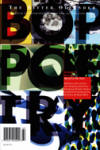The Bitter Oleander – Spring 2013
Theophrastus wrote that the root of Oleander when mixed with wine makes the temper gentle and more cheerful. While Theophrastus never got the chance to read The Bitter Oleander, he surely would have had similar sentiments about what reading it could do for a person. The Bitter Oleander strives to provide readers with deep, image-driven work that will “open eyes to a world our habits and blindness ignore everyday.” This issue is a testament to that goal.
Theophrastus wrote that the root of Oleander when mixed with wine makes the temper gentle and more cheerful. While Theophrastus never got the chance to read The Bitter Oleander, he surely would have had similar sentiments about what reading it could do for a person. The Bitter Oleander strives to provide readers with deep, image-driven work that will “open eyes to a world our habits and blindness ignore everyday.” This issue is a testament to that goal.
“A Storm Brewing” by Patty Dickson Pieczka is a meditative poem that does what The Bitter Oleander wants poetry to do: it asks the reader to look at what they tend to ignore, to make a connections with the world around them. The poem is rich with naturalistic imagery and maintains a steady, even pace:
Sun melts from trees as their cello
souls unfurl in long whole notes,
leaves smoky with dusk. If I could,
I’d soothe the wounds inside you:
old scars opening a thin crack
in the night, when quince petals
bleed to the ground and voices
of wind rise through thorns.
Those who love nature will find beauty in this poem. It is also a piece that asks you to do what it is does: meditate.
Nicole Bell’s short fiction piece “Shadow in the Dust” is a story of actualization. The protagonist, a girl named Cassie, is trying to survive a dust storm and an abusive home in the barren land of Kansas. The storm and land ultimately become a metaphor for her and her life-situation. The story begins with Cassie on her porch watching the dust storm creep closer and closer:
The once thick sea of grain was now the barren landscape that stretched for miles past the invisible boarders of Kansas . . . Her narrowed eyes were sharply focused then widened at the rising red mass that grew over the horizon as bits of fence post disappeared in its wake. Cassie felt she was watching thunder being born.
Cassie’s father blames Cassie for the storm and subsequently beats her for it. She decides not to stand for this any longer and leaves. “In front of her all Cassie saw was a land stripped, penetrated, and ripped apart. She has seen it break, but now, just as she imagined that she has willed the storm to stop, she began to see that she could change the fruitless soil.”
This issue contains a forty-page feature that highlights the life and work of Tótoddur Poulsen, weaving his experiences growing up on the Faroe Islands with his work, allowing the reader to see what influenced him and how it did so. Each poem takes the form of morsel of his life story, such as his poem “Super 8” which contains only 17 words and one image. While the feature itself is very interesting, it is a bit disappointing to see so much work from a single poet in a journal (regardless of how good he is).
“The Ascetic Attempts to Speak” by Paul Stubbs is an ekphrastic poem after Portrait of George Dyer Talking by Francis Bacon, 1966. This poem can be read with or without prior knowledge of the painting itself and also serves as a sort of history lesson. Dyer and Bacon were lovers and were both obsessive about their outward appearance, a sentiment which can be found embedded in this poem:
as, for you, all that exists is
perfection and your eternal
failed search for it
—So what have been the results
of such a painstaking wait?
Only
the daily build-up of phlegm
beneath your tongue
The body of the poem is contorted much like the body in Bacon’s painting. The language expresses frustration and a longing that is unattainable:
While your tongue,
a syntactical stump,
it continues to de-alphabet the world and root you
always deeper into the mud of man’s mind; you, silent
and god-mauled,
passing again from atom to atom
in prayer . . .
Regardless of your familiarity with Bacon, Dyer, or the painting, this poem serves as a catalyst for exploration into their history and their story.
The Bitter Oleander has a great mission statement, and the editors made sure that this issue adhered to it. Each work opens the reader’s eyes in a new way and many have a calming meditative effect that can recharge your own creative battery.
[www.bitteroleander.com]





